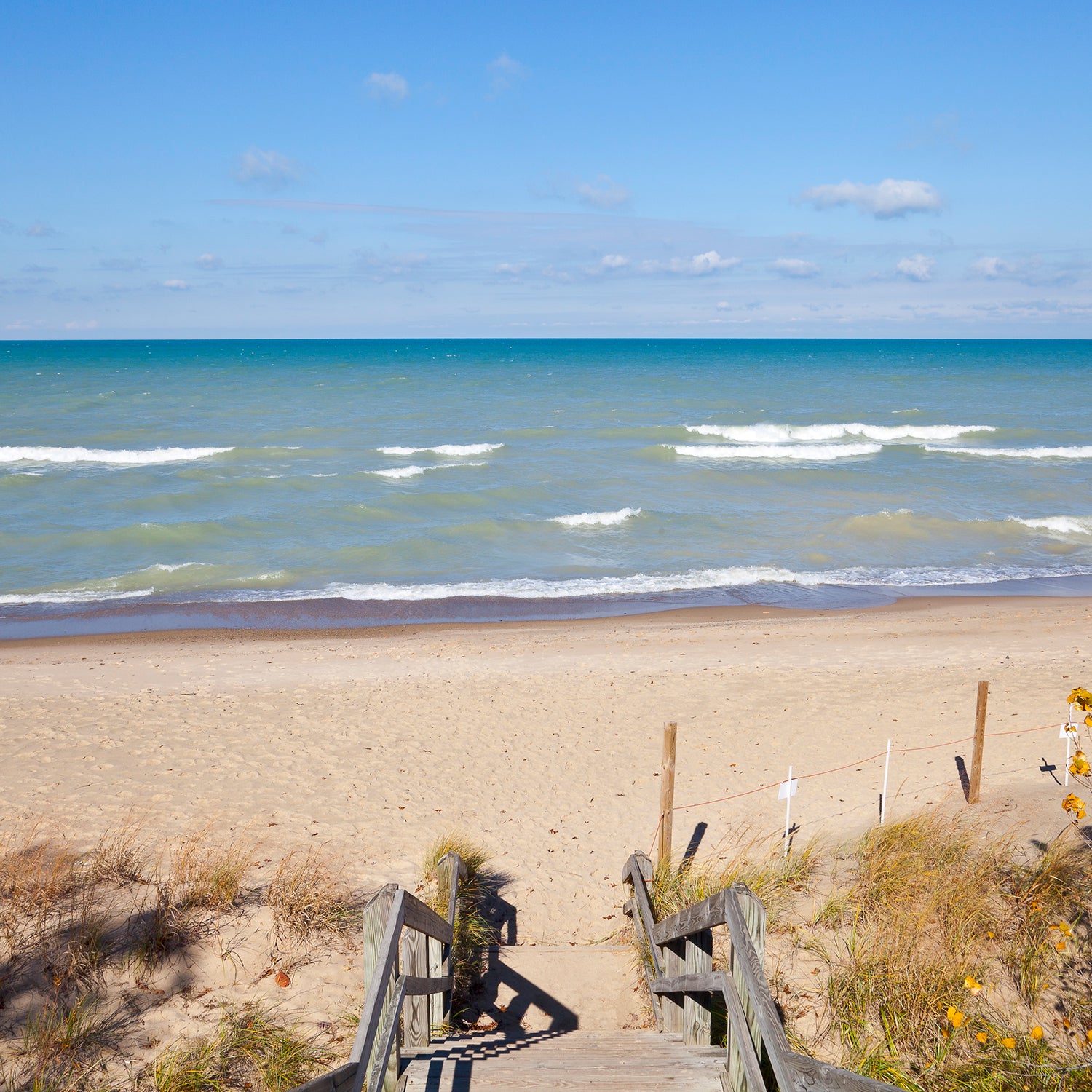Indiana Dunes is��no stranger to homemade signs. Folks along the south shore of Lake Michigan have been hoisting Save the Dunes��placards��. But last Friday, a new sign was made.��It was cardboard, with Park��written in Sharpie. A ranger held it for a photo at the entrance to��the Indiana Dunes National Lakeshore, so that it read Indiana Dunes National Park. It was the end of a century-long battle that, in true Midwest fashion, concluded modestly. No big to-do, just a few smiling faces and that sign.
The dunes climb��200 feet above freshwater beaches��and descend��into swales and pine forests filled with hundreds of bird species��and endangered prairie. The park’s 1,100 native plants make it the fourth most diverse in plant life within the entire National Park System. The Great Marsh restoration has brought back migratory birds��like sandhill cranes. But the most unique area of the park is its oak savannahs—where mature black oaks grow scattered among Midwestern wildflowers—which once spread across 50 million acres from Michigan to Nebraska.
Just 50 miles from Chicago, the park saw 2.1 million visitors in 2017; its��new designation makes it the 14th most visited national park in the country. The preserve��protects 15 miles of shoreline, and within its 15,000 acres are 50 miles of hiking trails��with equestrian and cross-country-ski routes. Kayakers can enjoy paddling on the lake or join canoers inland on the newly restored Little Calumet River waterway.
Those looking for something more relaxing can watch the sun ease behind the Chicago skyline from one of the park’s eight beaches. The eastern ones��are dog friendly, as are most of the park’s trails. Its campground is��just a quarter-mile from the South Shore electric train��(running between Chicago and South Bend)��and has 66 campsites��with gas and convenience stores nearby.
The redesignation as a national park was written into��,��a controversial spending bill signed by President Donald Trump that increased border-security funding and threatened to shut down the government.��The inclusion is odd—the Trump administration ��making the area a national park last summer—but it marks the end of��an effort started in 1916 by , the first director of the National Park Service.
In a hearing Mather held two months after the National Park Service��was created, he advocated for the creation of Sand Dunes National Park along the Indiana shore. Industrial interests spent the next four decades fighting for a larger port in the area instead. They met their match in 1952, when Dorothy Buell’s aggressively organized for federal protection. Eventually, Illinois senator Paul H. Douglas joined the protection��cause, and in 1966 the Indiana Dunes ��managed by the National Park Service.
As a national park, the Indiana Dunes aren’t expecting increased attendance, according to Indiana Dunes��public information officer Bruce Rowe,��who cited��the fact that Cleveland’s Cuyahoga Valley saw no major increase in visitors when it went from a natural recreation area to a national park in 2000.��Rowe says��the only change will be renaming a trail after Senator Douglas, which will join��the existing Dorothy Buell Visitor Center to honor their efforts in protecting the park.
Rowe hopes the new name will pull people beyond the beach. “While the beach and sand dunes will always be our primary draw for the public, we want visitors to get a chance to experience more of this great national park,” he says.
Sometime in the near future, the national park will get a new (formal) sign. Officials say��they don’t have anything planned to celebrate yet, but in the meantime, visitors to��Indiana Dunes can continue to find the same things they always have: lots of sand, waterfront views, and an experience in nature unique to the Hoosier State.


